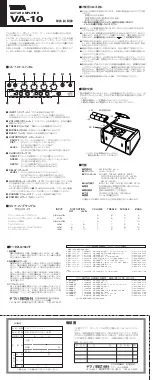
OPERATION
17
|
PreSonus 2008
2.3 MICROPHONES
The FireStudio Tube works with many microphones including dynamic, ribbon and condenser microphones.
2.3.1 Condenser
Condenser microphones tend to generate a high-quality audio signal and are one of the most popular mic
choices for today’s studio recording applications. Because of their design technology, condenser microphones
require a power source, which can be provided from a small battery, external power supply or from
microphone inputs as
phantom power. The FireStudio Tube sends phantom power over XLR inputs only.
2.3.2 Dynamic
Dynamic microphones are possibly the most widely used microphone type – especially in live shows. They are
relatively inexpensive, resistant to physical damage and typically handle high sound pressure levels (SPL)
very well. Unlike condenser microphones, dynamic microphones do not require a power source and, in most
cases, has no effect on a dynamic microphone’s audio quality or sensitivity.
Dynamic microphones, especially ribbon microphones, tend to generate low output voltages, so they typically
need more preamp gain than a condenser microphone.
Ribbon
Ribbon microphones are a special type of dynamic microphone and get their name from the thin metal ribbon
used in their design. Ribbon microphones have very high quality sound reproduction qualities – especially
higher frequencies sounds. However, they are very fragile and typically cannot handle high SPL’s.
The most important thing to note about Ribbon microphones is that nearly all
Ribbon Microphones do NOT
require phantom power.
In fact, unless a Ribbon microphone specifically calls for phantom power, sending
phantom power to a ribbon microphone will destroy it – usually beyond repair.
2.3.3 USB and other types
There are a vast number of microphone types available, and as technology increases, it is very likely more will
surface. One type of microphone to emerge recently is the USB microphone. Most USB microphones have
their own built-in preamp and use drivers separate from the FireStudio Tube drivers.
If you are using a new or non-standard type of microphone (i.e., USB, headset, laser, MEMS, etc.), please
consult your microphone’s user’s manual for power requirement or compatibility information.
Regardless of the microphone type you are using, we recommend reading your microphone’s user’s manual
thoroughly before engaging phantom power or if any other usage questions may arise.
Содержание FIRESTUDIO TUBE
Страница 4: ......
















































